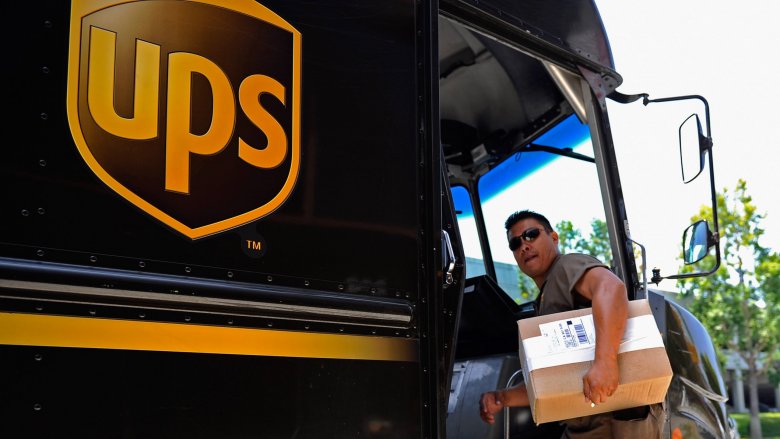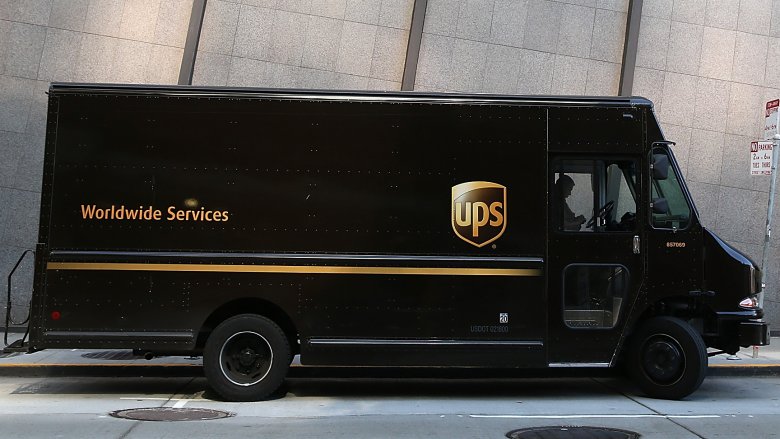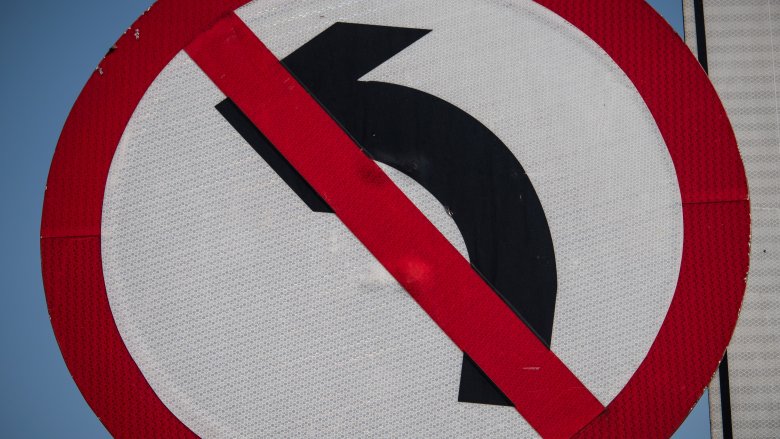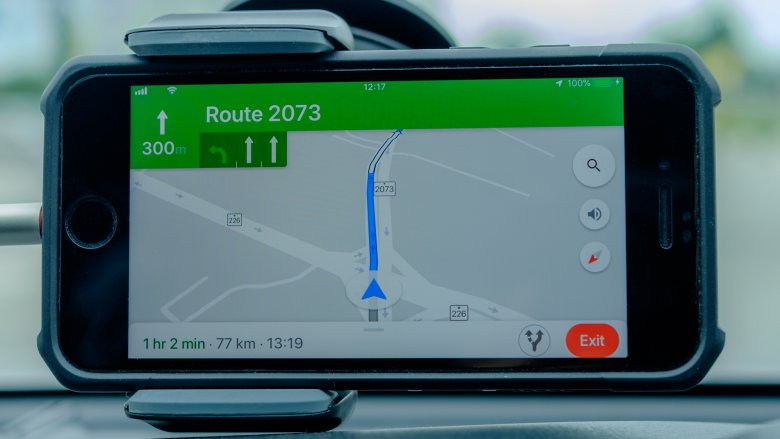The Weird Reason UPS Trucks Almost Never Make Left Turns
It's information that, at first blush, seems to be what mainstream scientists refer to as "totally made up," but it's true: when at all possible, delivery drivers for the United Parcel Service (aka UPS) won't make left turns. "But why?" the layman might ask. Is it out of fear? Some leftover superstition from days long passed? A deep respect for folks like Derek Zoolander who, despite all their best efforts, just aren't ambi-turners? Prepare to be flabbergasted, because it turns out that the reasoning is actually grounded in genuine, head-scratching, non-whimsical reality. Get ready to have your mind blown by run-of-the-mill bean counting.
UPS, left turns, and a baffling amount of money
It probably won't surprise you to learn that one of the largest, most financially successful delivery companies on the planet makes a decent amount of its decisions on a financial basis. What might shock you is how much money they're estimated to save simply by telling their drivers not to hang a louie. According to CNN, UPS saves an estimated 10 million gallons of fuel every year just by eliminating left turns. With diesel running, on average, around three dollars per gallon, that's a $30 million annual savings. They also shave miles off of every route, allowing for more packages to be delivered, saving money on man hours and, in the long run, maintenance. The grand total? By their own estimates, somewhere in the $300-400 million range. Even for a massive corporation, that's a lot of money.
But perhaps you are understandably hesitant to believe Corporate America, Big Delivery Guy, and The Man? Then turn your tin foiled noggin to the good folks over at Mythbusters. They tested the veracity of the theory that skipping right turns could save on fuel and found that, in a single route, a truck making exclusively right turns used around a third less fuel than one that sat waiting to take a left.
So what's the logic here? Should we all be avoiding left turns in our daily lives in an attempt to see what brown can do for us? Funny you should mention it, but as a matter of fact, yeah, we probably should.
Maybe we should all follow UPS in not making left turns
So as it turns out, left turns are kind of the bane of modern traffic, at least in parts of the world where people drive on the right side of the road (and that's about 65 percent of all drivers, so it's a big deal). Think about your daily commute: turning right is quicker, since you can generally do it at a red light. You're not stuck in the middle of the intersection waiting for oncoming traffic to pass, running your engine pointlessly as the sound of your turn signal ticks away your precious moments on this mortal plane.
There's also the matter of safety. In 2014, the Washington Post reported that over 50 percent of crossing-path collisions involved a left turn, while less than six percent involved hanging a right. More shockingly, over a third of fatal motorcycle accidents were due to a driver making a left hand turn in front of the biker.
Through the use of routing software programmed to eliminate as many left turns from their drivers' daily grinds as possible, UPS minimizes the risk of their employees causing congestion or being involved in potentially deadly accidents.
The tracking history of UPS's no left turn policy
While the idea of nearly eliminating an entire direction of travel from a delivery driver's arsenal might seem novel, it's actually a method that companies have been incorporating for decades. CNN reported that UPS has been utilizing a right-turn-heavy system since the 1970s. Since then, they've developed a routing optimization software program called ORION that, by all accounts, makes your phone's GPS look like an old timey farmhand giving you as-the-crow-flies directions by comparison.
ORION, which took more than a decade to develop, takes insane amounts of data that most mapping software wouldn't consider, making thousands of calculations per minute to create the most efficient multi-point route possible. The results? According to UPS, millions of dollars saved, and a reduction of 100,000 metric tons of carbon emissions per year.



